In the summer of 2021, an unrestored, one-of-one 1979 AMC Gremlin AMX prototype appeared at the weekly Bakers of Milford car show in Milford, Mich. The car is owned by Mike Smith, a former employee of American Motors, Jeep and Chrysler Corp. Shortly after appearing at the show, Smith’s prototype was featured in Old Cars.
Smith was pleased with the story on his AMX prototype and subsequently mentioned having knowledge of the whereabouts of an original, one-owner Rallye Red 1970 Plymouth Hemi ’Cuda that had been idled since the ’70s. He and the car’s original owner, Mike Gabriel, had worked together at AMC, Jeep and Chrysler Corp. Smith joined Chrysler in 1968, moved to Jeep in 1973, then AMC in 1979. Gabriel had earned his Mechanical Engineering Degree from Michigan Technological University in 1969 and was hired by AMC the same year. The men’s career paths crossed numerous times during vehicle development at these companies. They respected one another and developed a lifelong friendship that lasted until Gabriel passed away in February 2011 at the age of 65.
Over the years, the two of them had brief discussions about Gabriel’s 1970 Hemi ’Cuda. Smith found himself often asking Gabriel the same questions: “Are you doing anything with your Hemi ’Cuda to get it back on the road?” and “Is there anything I can do to help you with it?” Gabriel would roll his shoulders, shake his head and, for the most part, act disinterested in discussing the Hemi ’Cuda.
“Gabriel was focused on raising a family, and his automotive passion was strictly Jeep,” Smith said. “He was driven to make the evolution of the product a success. His leadership role in the Jeep vehicle development program impacted its acceptance within the company and allowed the Jeep to thrive in the automobile industry.”
Mike Gabriel was “Mr. Jeep,” and Smith said Gabriel’s interest in the ’Cuda waned once he became engrossed in Jeeps. As Gabriel dove into his work at Jeep, the ’Cuda became a run-around car until it developed an engine problem in the 1970s. After an attempt to repair it without success, the car was left in a partially dismantled state.
“I talked to him over the years about the car, but he just did not seem interested,” Smith continued. “I think the poor condition of the car turned him off. He bought the car new, and that’s how he remembered it, and he didn’t consider it a special collector car, but more as a project to be addressed at another time. Out of sight, out of mind, so to speak. He had a career, wife, home and Jeeps, then, later, children. No time to think about an aging, old Plymouth. So, it sat. And that is how it remains today. He did not consider it valuable, just a tiring old car that maybe one day will get back on the road.”
On the other hand, Smith has a direct connection and soft spot for the legendary 426-cube Hemi engine and any of the Chrysler products that were powered by it. He was a performance engineer at Chrysler Corp. where he worked on the 1970 Hemi and drove many Hemis during the development of the package. In fact, one of his first jobs as an engineer involved aerodynamic testing of the Dodge Daytona at the Chelsea Proving Grounds. It also explains why Smith would often ask about the Hemi ’Cuda and try to nudge his good friend into getting it running again.
Life with a Hemi ’Cuda
On Dec. 19, 1969, Mike Gabriel — who had recently graduated from college and turned 24 years old — gifted himself with the new Rallye Red 1970 Plymouth Hemi ’Cuda from J.E. Grissom Chrysler-Plymouth in Center Line, Mich. The well-optioned ’Cuda arrived at the dealership from the Hamtramck Assembly Plant and went into dealer inventory, where Gabriel spotted it. His first choice was actually a Hemi Road Runner, but the dealership didn’t have one in its inventory, so Gabriel “settled” for the Hemi ’Cuda instead.
In addition to the 426-cid Hemi V-8 with dual four-barrel carburetors factory-rated at 425 hp, the Hemi ’Cuda’s performance equipment included the 4.10-ratio Dana 9-3/4 rear axle behind the three-speed TorqueFlite automatic transmission. The car’s interior was optioned with bucket seats, a console with woodgrain trim, the Rallye instrument cluster and an AM radio. In addition, the car sported the racy Shaker Hood, hood tie-down pins and color-keyed Elastomeric front bumper.
From 1970 to 1973, Gabriel used the Hemi ’Cuda as a daily driver, even during Michigan’s snowy winter months. In 1973, he decided not to put himself and the Hemi ’Cuda through another Michigan winter and its white-knuckle driving conditions. Michigan’s application of road salt further influenced Gabriel to store the car during the snowy season as he attempted to keep it from succumbing to rust. Fortunately for Gabriel, a promotion at AMC allowed him to lease a company vehicle. In 1973, he was relocated to Jeep headquarters in Toledo, Ohio, and his vehicle of choice for the daily commute from his residence in Plymouth, Mich., to Toledo was a Jeep CJ.
Dave Thompson, who worked with Gabriel at AMC, recalls seeing Gabriel’s Rallye Red ’70 Hemi ’Cuda parked in the AMC employee lot on numerous occasions in the early 1970s.
“Back in the day, employees were faithful to the company, and when a non-AMC parked in the lot, it wasn’t favorably accepted, but when the Hemi ’Cuda showed up, no one complained about it being there,” Thompson recalled.
One day, Thompson realized he’d not seen the ’Cuda in the lot for a while. Since spotting an automobile from a competing manufacturer was unusual, the bright-red Plymouth’s disappearance went noticed.
Little did Thompson or any other AMC employee know Gabriel’s Hemi ’Cuda had gone into storage where it would remain for the next 45 years — and counting.
The Discovery
On Dec. 4, 2022, Gabriel’s daughter, Danielle, invited me to see her father’s long-hidden car in the storage facility where it had been quietly tucked four years earlier. The photo shoot for Old Cars was done there with minimal disturbance to the car, and as it was found; nothing was staged or manipulated. Once its cover was removed, the Hemi ’Cuda was pushed away from the gray cinder-block wall to allow enough room to safely get around the car during the photo shoot. All four tires were on dollies, which made moving the car into position simple.
Prior to seeing the car, I was told it had been idled back in 1976 due to an engine noise. During the photo shoot, I thoroughly examined the Hemi ’Cuda and it was evident the car had been sitting for many years. Indeed, it wore red, white and blue 1976 Michigan bicentennial license plates. When the hood was raised, a plastic bag containing eight spark plugs was found sitting in the battery tray, and the valve covers were gone. Upon investigating the interior, I discovered the valve covers were sitting on the floor, behind the front seats. Behind the front passenger seat was a replacement high-performance camshaft in the original box.
With’s Gabriel’s death, we’ll never be able to verify exactly why his work on the Hemi ’Cuda’s engine stopped. Gabriel did leave some clues, however.
Further review of the engine compartment revealed a loose radiator with the coolant lines disconnected and shifted aside, and the timing chain cover loosened and partially removed. It appeared Gabriel had planned on sliding the old camshaft out to install the new high-performance replacement that is still boxed inside the car. Judging by the evidence presented before me, something had gone wrong and the camshaft swap process came to a halt.
The ’70 Cuda was, indeed, a bona fide, numbers-matching Hemi with the engine it was born with. I found that the engine and transmission identification numbers matched, and the information on the car’s fender tags indicated it had, indeed, left the factory as a 426 Hemi with the three-speed automatic transmission. It did not appear the engine, transmission and drivetrain had ever been out of the ’Cuda.
After studying the physical evidence, it appears Gabriel may have discovered the engine needed to be removed to correctly complete the camshaft swap, stalling the work. (It’s impossible for an untrained person to change the camshaft on a 426 Hemi with the engine still in the car.)
Inside the glove box were two important pieces of documentation: proof of insurance, and a vehicle registration form with an expiration date of June 1976. These documents were neatly folded and placed in an envelope. This documentation further verified the Hemi ’Cuda was idled the year the United States celebrated its bicentennial.
A ’Cuda that Binds
Gabriel’s son, Matt, was born in 1985 and has fond memories of seeing the Hemi ’Cuda parked in the garage at their home in Canton, Mich. Growing up in the Detroit area, he’d look forward to attending the annual Woodward Dream Cruise with his father, usually in a Jeep Renegade with the hardtop removed so they could get a good look at the cars.
Matt was curious about his father’s Hemi ’Cuda, although he’d never heard the engine run. During the Dream Cruise, they’d see a fast muscle car or a couple cars preparing for a little street race and Matt would ask his dad if the Hemi ’Cuda was faster. His father would usually just chuckle and respond by saying, “The ’Cuda would blow their doors off.”
Over the years, there was always talk of restoring the car, according to Matt. Many friends, neighbors and colleagues offered to help. There were also strangers who found the car and offered to buy it.
“One day, my father found a note attached to the ’Cuda,” Matt recalled. “Apparently someone managed to get into the garage, looked it over, then offered to give him a fully restored 1970 ’Cuda 340 as an even, straight-up trade. My father didn’t want any part of it.”
To this day, seeing the Hemi ’Cuda parked in the garage and hanging around it, and talking to his father about the ’Cuda, are some of the fondest memories Matt says he has from his youth.
Matt’s sister, Danielle, was born in 1984 and witnessed first-hand the affection her father had for the Hemi ’Cuda that he would talk about so little.
“My father and I did not talk about the car or discuss it at length, as I recall,” she said. “It was referenced throughout my life and caused a stir from time to time. I knew it was a big deal for him to purchase the car and therefore it had immense sentimental value."
“My dad would always ask my mother, brother and I to keep the garage closed if the car was uncovered,” she added. “Our house in Canton was a modest 1970s ranch home with a two-car garage facing the street. Our home in Plymouth had a much longer driveway on an incline that curved into the three-car garage. Over the years, I think two times, one at our family home in Canton and the subsequent home in Plymouth, people had stopped by to make offers on buying the ’Cuda. It was like this little secret treasure to my dad."
“I have some correspondence saved from my dad’s friends that mention the Hemi ’Cuda. It was a central conversation in my dad’s life, but not between my father and me.”
Danielle and Matt Gabriel have often wondered why their father chose to leave his ’70 Hemi ’Cuda idled with the engine disabled. They, with the help of others, have searched long and hard for the answers, but each time they discuss it, they can draw no definitive conclusion.
According to Danielle and Matt, their father was an exceptional listener and planner. He was a man of few words who followed a plan. Perhaps his ultimate plan for the Hemi ’Cuda was to make it a retirement project. They dream of seeing the ’Cuda restored and hearing the 426 Hemi engine run for the first time.
At this time, the journey for the Gabriel family ’70 Hemi ’Cuda is not clear. When it starts the next phase of its journey — whatever that might entail — we hope to document that next step. Stay tuned!
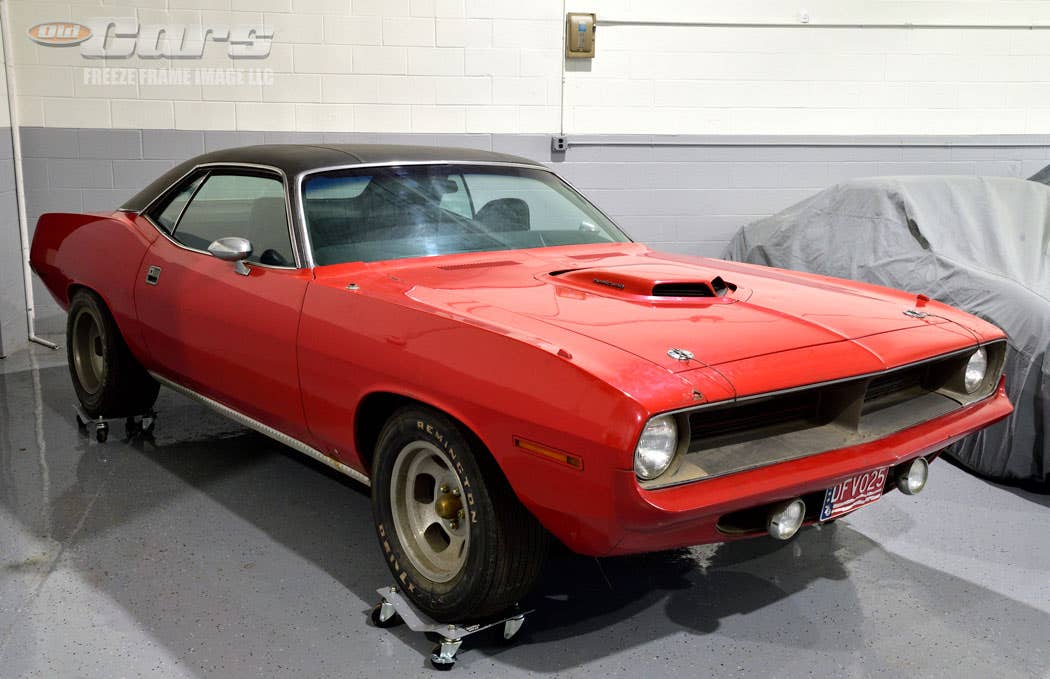
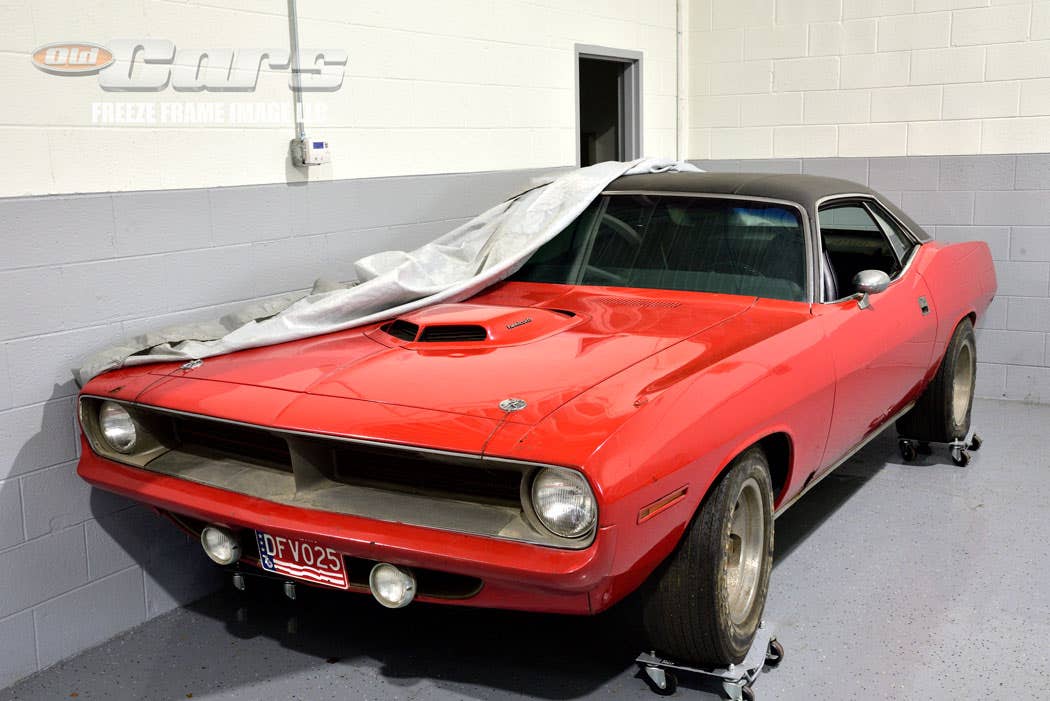
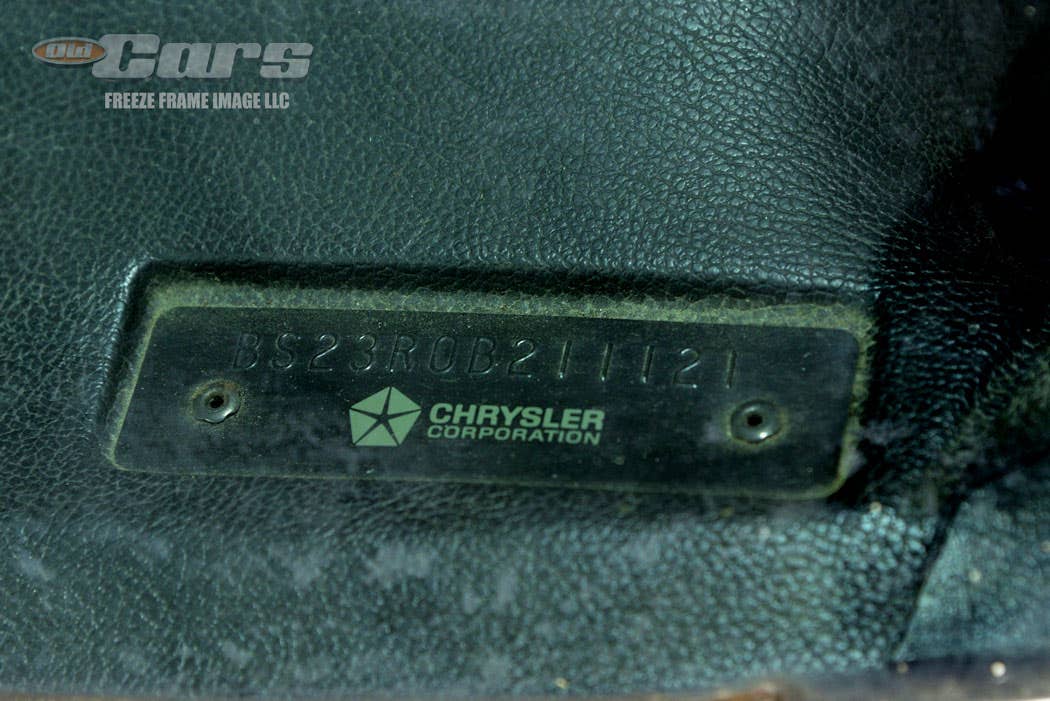
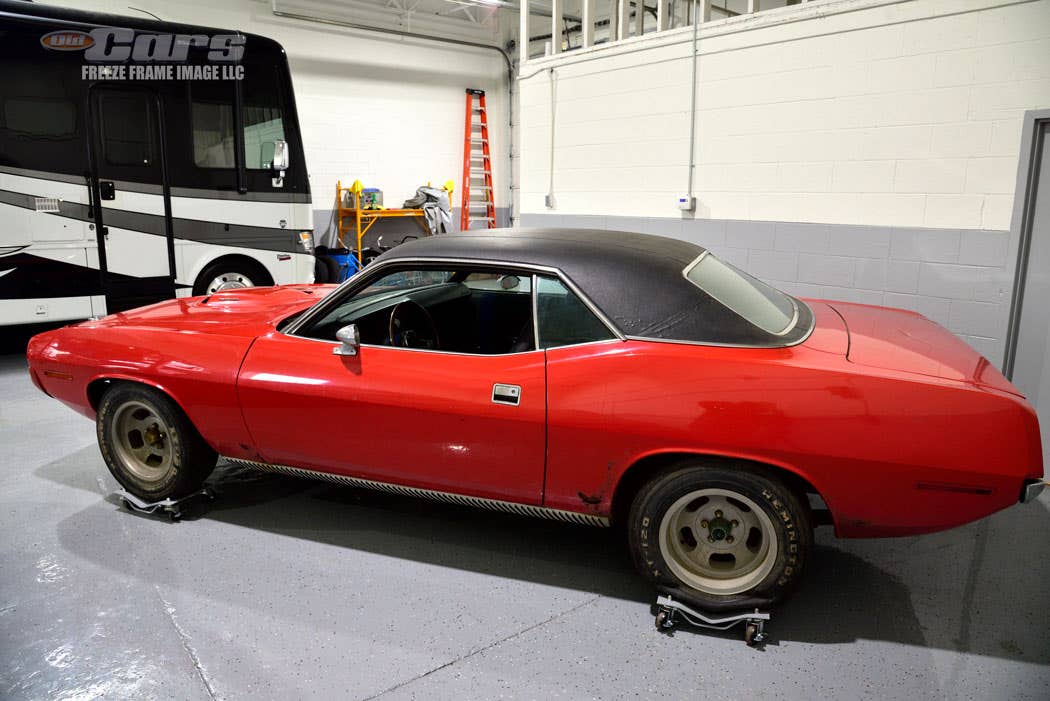
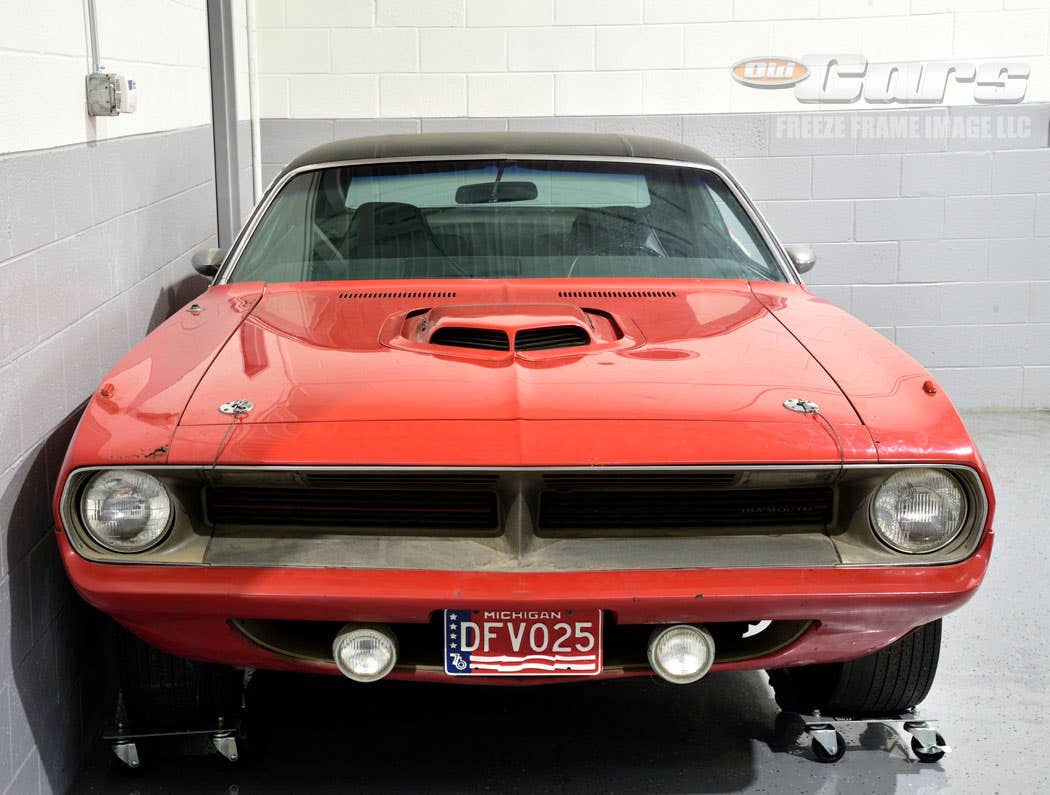
A Tribute to ‘Mr. Jeep’
By Mike Smith
In 1973, I joined Jeep engineering after leaving Chrysler Corp. as manager of vehicle development. One of the duties I had was responsibility for exhaust emissions, testing and certification. That responsibility was being transferred from Jeep to American Motors, largely because Jeep used AMC engines and it was expedited to combine the two functions. Jeep was a totally owned subsidiary of AMC at that time, and was just beginning to integrate some engineering functions. Jeep was a separate group housed in Toledo, Ohio, with its own engineering and manufacturing operations. AMC Engineering was in Detroit.
Mike Gabriel was the responsible engineer for AMC. Mike was assigned to take over that duty. Mike and I spent a lot of time getting the vehicles certified for the 1975 model year. We became close friends. It was then that I learned he had a 1970 Plymouth Hemi ’Cuda. He was still driving it at the time, but was concentrating on his job and responsibilities at Jeep. His allegiance to Jeep was admirable. He thoroughly engrossed himself in Jeep and became one of the greatest advocates for the brand. Over the years, he was often referred to as “Mr. Jeep” and “Mike Jeep” and more. He became well-known for his protection of the brand and its heritage. He held fast to his principles that the Jeep should always remain a Jeep. He did not compromise. Meetings could get very painful if he disagreed with something you were trying to do that compromised what he felt would dilute the product.
Mike’s allegiance to Jeep continued throughout his entire career at AMC and Chrysler. He was a major player in establishing Camp Jeep where we met with customers at a week-long event in places across the United States. Mike listened intently to the customer and drove those ideas home. It could be said that he was the protector of the brand. He was, indeed, a warrior.
Mike’s integrity was impeccable, and he cared about people just as much as he did about Jeeps. He was always available, if you needed him. He did not engage in idle talk and rumors. He would listen and learn.
Lunch was always an adventure. He did not like wasting time eating, so he had a phrase which he often used, and that was “bulk per bite.” He could make a world-famous salad, and very efficiently eat it. Lunch was always quick with him. I often tried to engage him and talk about his ’Cuda during lunch. He usually quickly blew it off and returned to his favorite subject, which was Jeeps.
When I moved from manager of Jeep Vehicle Development to a different job in 1979, Mike replaced me in Toledo, working for Jim Thornton. Jim was a great mentor and Mike excelled under Jim. He developed a respect for Mike’s ability and integrity, which led to Mike becoming a major player in later years, while still working on Jeep.
I recall one incident that has stuck with me over the years. We had direct employees and contract employees. Direct employees got more paid holidays than contract employees. In this incident, a contract employee that was going through some difficult financial times told Mike that he really would like to work during a holiday. The facility was closed for the holiday, but Mike said to him, “Come in and drive a Jeep.” By that, Mike meant drive a test vehicle for a day and get familiar with it and evaluate it and report on it. This individual needed seat time, but his job didn’t allow enough freedom to experience the vehicle during normal working hours. He got paid, plus a great education in this Jeep on a variety of roads for eight hours on that holiday. He turned in a thorough report and highlighted some issues that were important that required time in the vehicle. This vehicle engineer went on to become a valuable team player, but never forgot the time he was allowed to get a day’s pay for driving a vehicle without interference.
As he progressed in the corporation, Mike became known for day trips where he would invite a group to accompany him on a day trip to familiarize themselves with a variety of vehicles on public roads.
When I left AMC in early ’84, the production YJ Wrangler was just getting started, and Mike was a part of the development group. He took an active role and drove the team to bring it home. Even though I was gone, we often talked about where the program was going. He ...accompanied [Jim Thornton and I] when we visited Hines Bender Corp. to explore the potential of making a bent-tube frame. In fact, Mike was one of the few people who knew what we were doing. Fortunately for him, he was not associated with the program when Jim Thornton and I got crucified for it. He managed to stay out of sight and help bring the program home. His saving grace was he didn’t expound on what we were doing. As I said earlier, Mike did not engage in idle conversation. But he never missed an opportunity to participate, and he loved the CJ and made sure he protected its heritage.
If you like stories like these and other classic car features, check out Old Cars magazine. CLICK HERE to subscribe.
Want a taste of Old Cars magazine first? Sign up for our weekly e-newsletter and get a FREE complimentary digital issue download of our print magazine.
*As an Amazon Associate, Old Cars earns from qualifying purchases.








